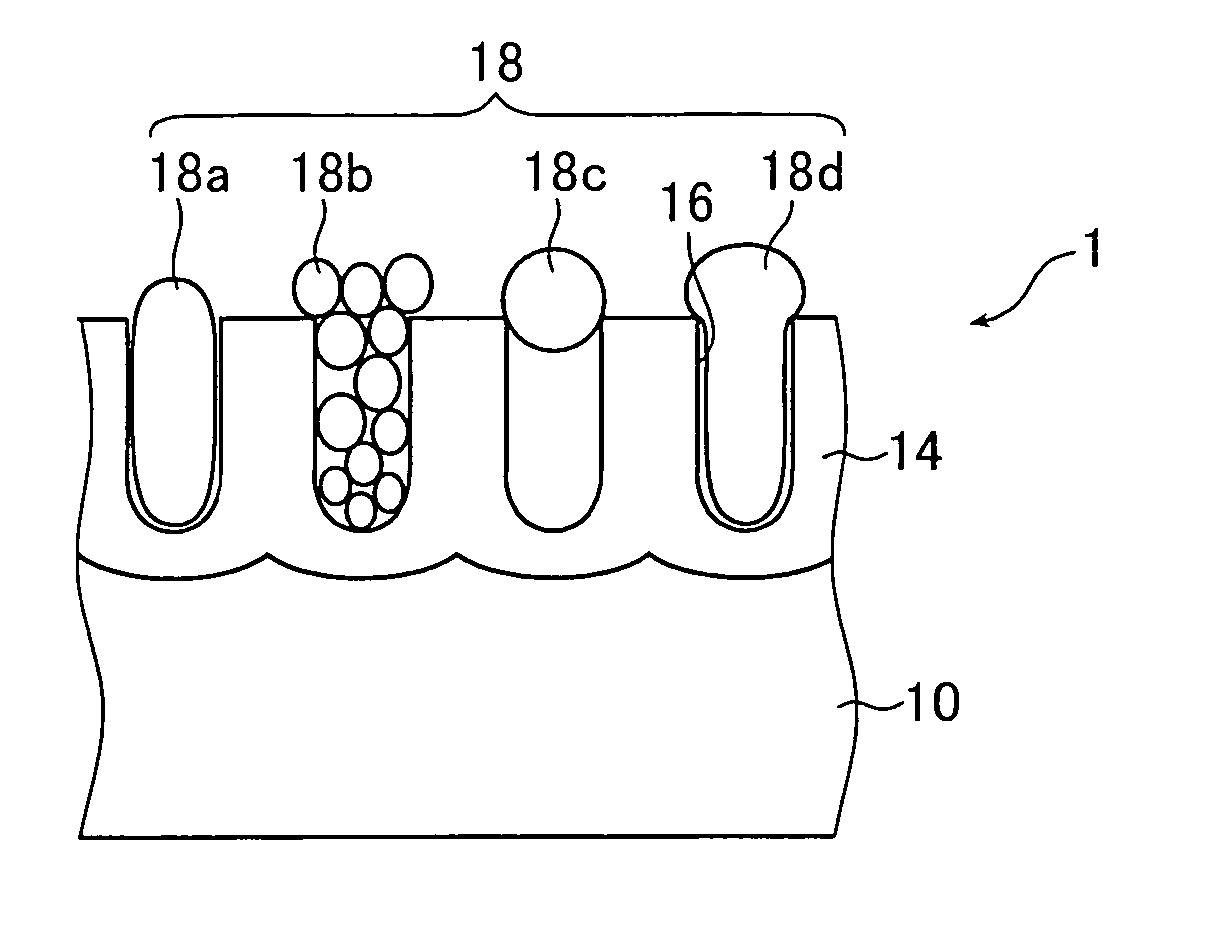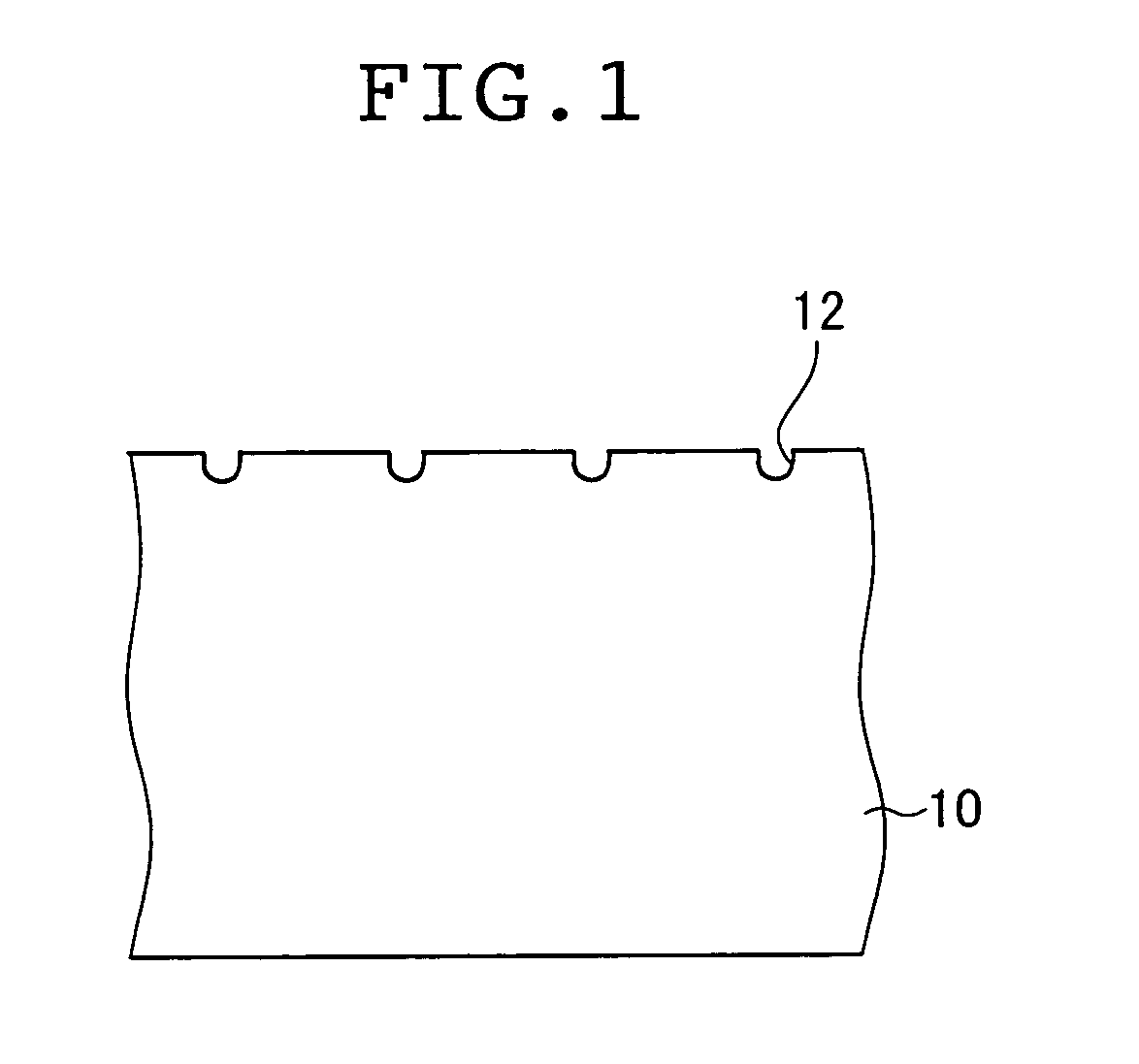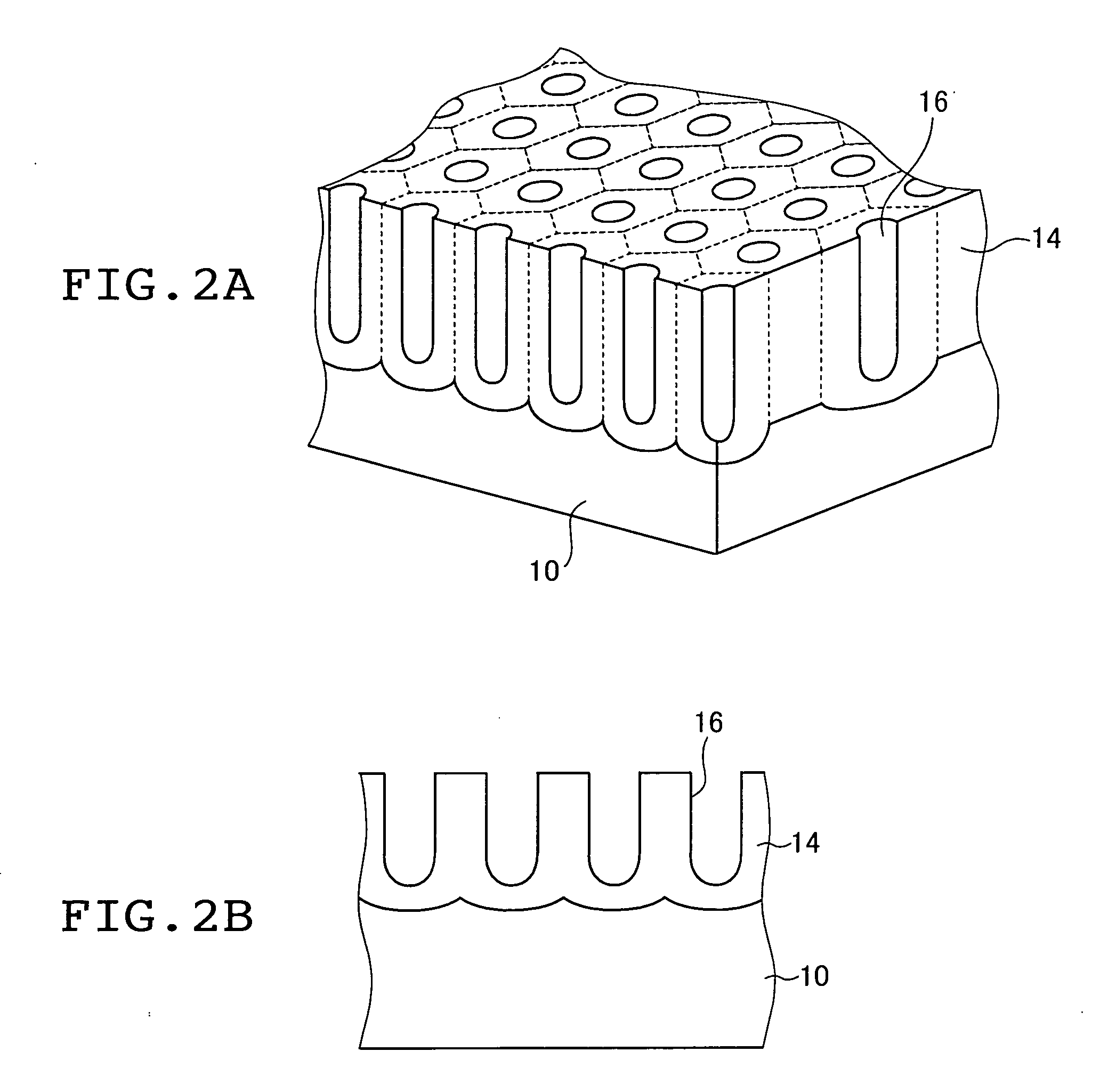Fine structural body and method of producing the same
a structure body and fine technology, applied in the field of structural bodies, can solve the problems of insufficient resonance intensity, subjected to anodizing treatment, and film is not put into practical use industrially, and achieves the effects of simple process, low cost, and short time period
- Summary
- Abstract
- Description
- Claims
- Application Information
AI Technical Summary
Benefits of technology
Problems solved by technology
Method used
Image
Examples
examples
[0243] Hereinafter, the present invention will be described in more detail with reference to examples. However, the present invention is not limited thereto.
example 57
[0307] A structural body was produced in the same manner as in Example 1 except that the sealing treatment was conducted as described below.
[0308] The following operation was conducted in a high purity Ar gas, to thereby produce a dispersion liquid of magnetic particles.
[0309] First, 0.64 mmol of iron (III) acetylacetonate [CH3COCH═C(O—)CH3]3Fe, 1.5 mmol of 1,2-hexadecanediol, and 20 mL of dioctyl ether were mixed, and the mixture was heated at 100° C. Then, 0.5 mmol of oleic acid and 0.5 mmol of oleylamine were added thereto, and the mixture was refluxed at 200° C. for 30 min, to thereby obtain a liquid A.
[0310] Meanwhile, 0.5 mmol of platinum (II) acetylacetonate [CH3COCH═C(O—)CH3]2Pt, 1.5 mmol of 1,2-hexadecandiol, and 20 mL of diooctyl ether were mixed, and the mixture was heated at 100° C. The mixture was cooled to room temperature, to thereby obtain a liquid B.
[0311] The liquid A was added to the cooled liquid B, and the mixture was refluxed at 297° C. for 30 min. After th...
examples 58 to 62
[0319] A structural body was produced in the same manner as in Example 1 except that the sealing treatment was conducted as described below.
[0320] The support was immersed in a bath of an electrolyte for nickel plating containing components shown in Table 8, and at a pH and a temperature shown in Table 8. The support was subjected to electrodeposition at a cathode current density shown in Table 8 for 2.5 min, to thereby obtain a structural body as a magnetic recording medium. Table 8 shows whether or not the bath was stirred during electrodeposition. In Table 8, “air stirring” refers to a method involving: feeding air to a bottom of an electrolytic tank; and causing convection in the electrolyte by buoyancy of elevating air bubbles for stirring. This method has a feature that nonuniform treatment due to flow rate hardly occurs compared with “stirring” using a propeller.
[0321] The structural body as a magnetic recording medium was evaluated for the magnetic properties as in the sam...
PUM
| Property | Measurement | Unit |
|---|---|---|
| Fraction | aaaaa | aaaaa |
| Fraction | aaaaa | aaaaa |
| Fraction | aaaaa | aaaaa |
Abstract
Description
Claims
Application Information
 Login to View More
Login to View More - R&D
- Intellectual Property
- Life Sciences
- Materials
- Tech Scout
- Unparalleled Data Quality
- Higher Quality Content
- 60% Fewer Hallucinations
Browse by: Latest US Patents, China's latest patents, Technical Efficacy Thesaurus, Application Domain, Technology Topic, Popular Technical Reports.
© 2025 PatSnap. All rights reserved.Legal|Privacy policy|Modern Slavery Act Transparency Statement|Sitemap|About US| Contact US: help@patsnap.com



